15 of the Most Colorful Insects in the World
Nature doesn’t hold back when it comes to insects. While most people imagine bugs as brown, creepy, or bland, there’s a whole world of creatures that look like they were painted by a surrealist. Here are 15 of the most colorful insects found in the wild today.
Rosy Maple Moth
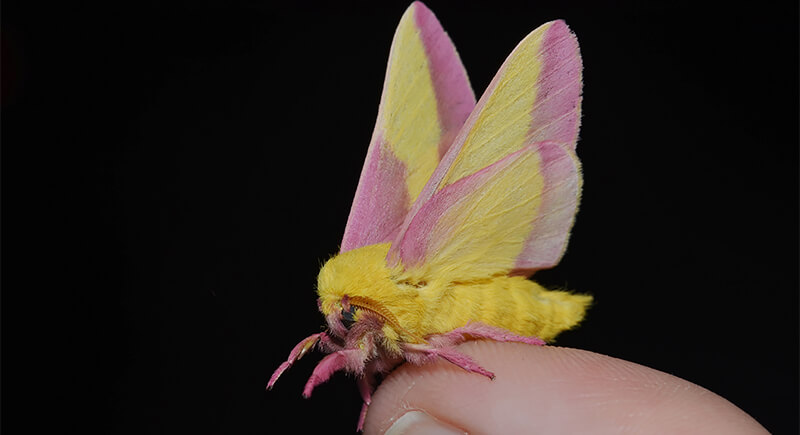
Credit: Wikimedia Commons
The rosy maple moth wears soft shades of pink and yellow that resemble a Starburst wrapper. Despite the sweet look, it’s one of the smallest silk moths, with a wingspan barely reaching two inches. This bird is most active during the summer months.
Rainbow Stag Beetle
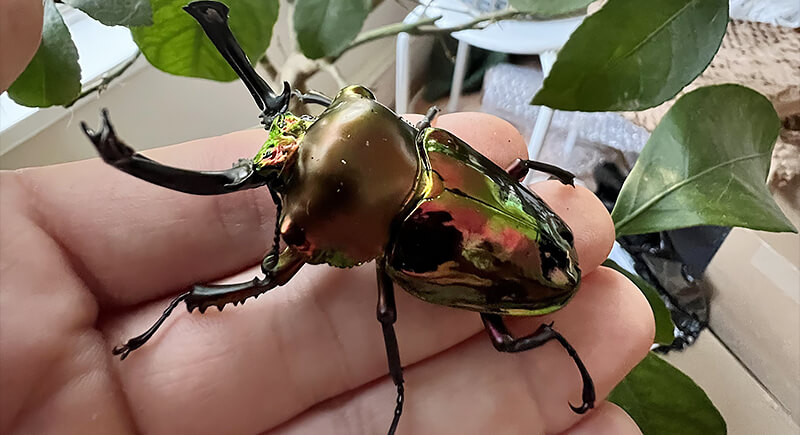
Credit: Reddit
The rainbow stag beetle doesn’t settle for one color. Its metallic body shifts between green, red, gold, and purple depending on the angle of the light. This beetle’s shiny armor has made it popular among collectors. Despite their intense appearance, they mostly snack on fruit and sap.
Peacock Spider
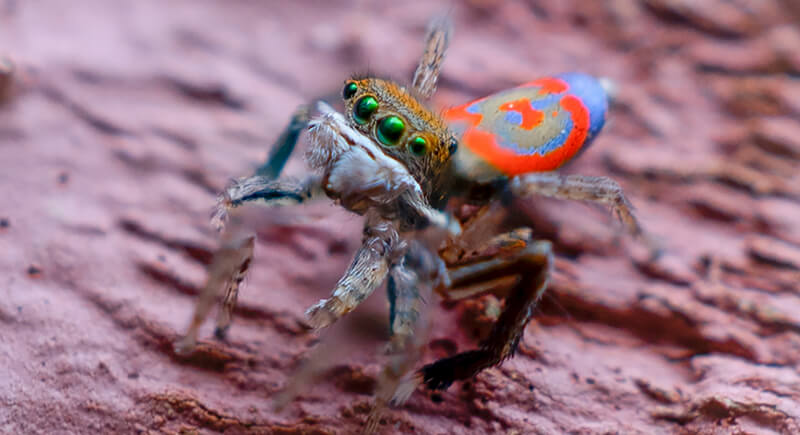
Credit: iStockphoto
Not many spiders make it into dance videos, but the male coastal peacock spider went viral for its flashy moves. They sport an iridescent blue, orange, and red abdomen. During mating, he raises his colorful flap and performs a complex courtship dance. It’s risky—if the female isn’t impressed, she might eat him.
Orchid Bee

Credit: Wikipedia
Orchid bees are metallic green or blue and smell fantastic. Males collect aromatic compounds from orchids and store them in their hind legs to woo mates. Scientists are still studying how scents are tracked across long distances. Despite their shimmering exteriors, they’re critical pollinators in the rainforest and help keep fragile ecosystems blooming.
Picasso Bug
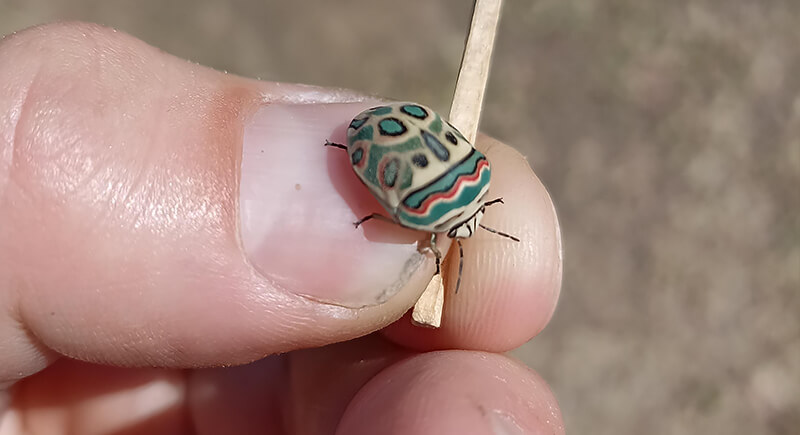
Credit: Reddit
This bug could hang in a modern art gallery. The Picasso bug, a type of shield bug from sub-Saharan Africa, is covered in symmetrical green and black patterns. It may be small, but it makes a strong visual impression, especially when resting on leaves in large groups.
Indian Painted Grasshopper
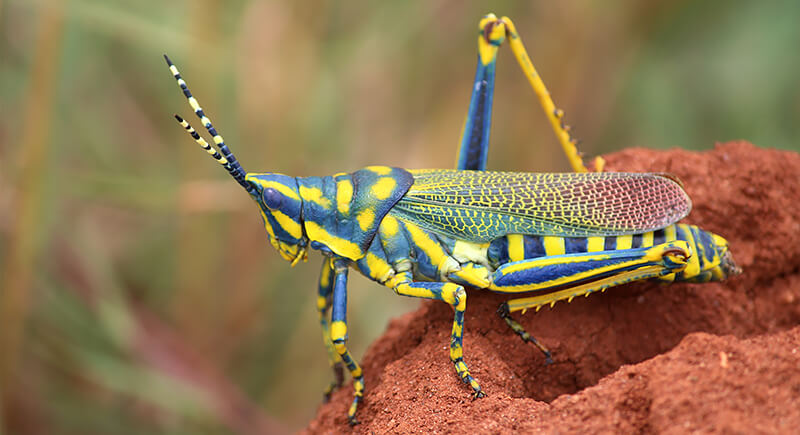
Credit: Wikipedia
You’ll spot this grasshopper before it moves. It is native to India and neighboring regions, and it wears vivid yellow, deep blue, and red-orange tones. The bright colors warn predators that this grasshopper feeds on poisonous plants like the crown flower. When threatened, it squirts a foul-tasting liquid to keep enemies at bay.
Golden Tortoise Beetle
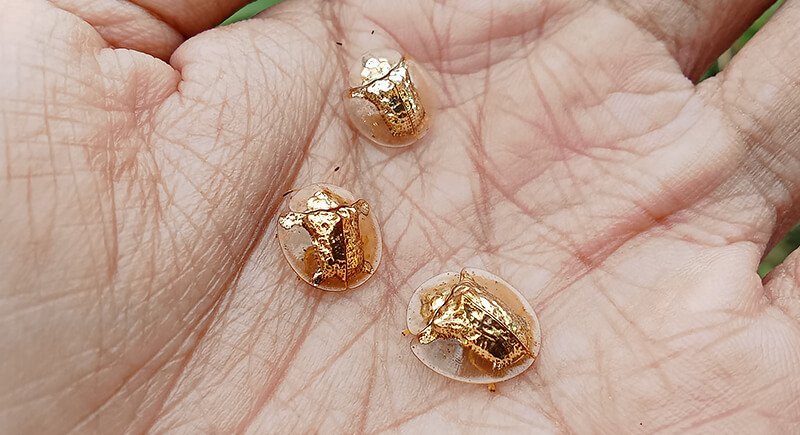
Credit: iStockphoto
This beetle looks like a piece of living jewelry. The golden tortoise beetle, common in the Americas, appears shiny gold thanks to a transparent, reflective shell. But it has a trick: if disturbed, its color fades to dull brown or red. The effect is caused by fluid movement beneath the shell.
Madagascan Sunset Moth
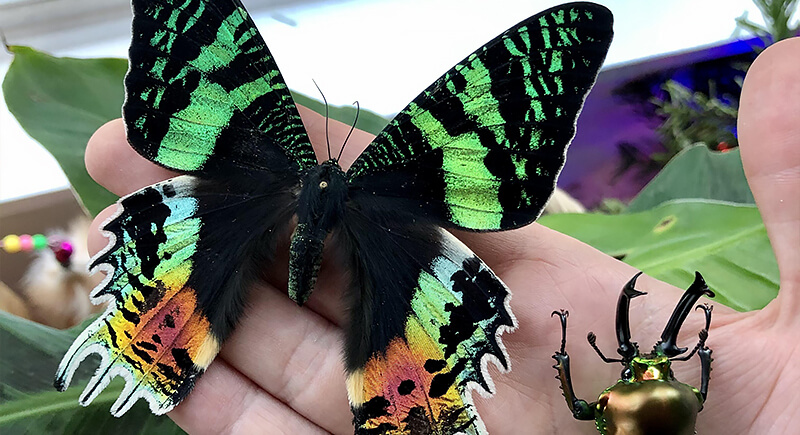
Credit: Reddit
The Madagascan sunset moth, often mistaken for a butterfly, is one of the most colorful moths in the world. It flies during the day, showing off wings streaked with blues, greens, oranges, and blacks. Its scales reflect light in different ways, giving its wings that shimmering, color-shifting glow.
Chrysochroa Fulminans Nishiyamai
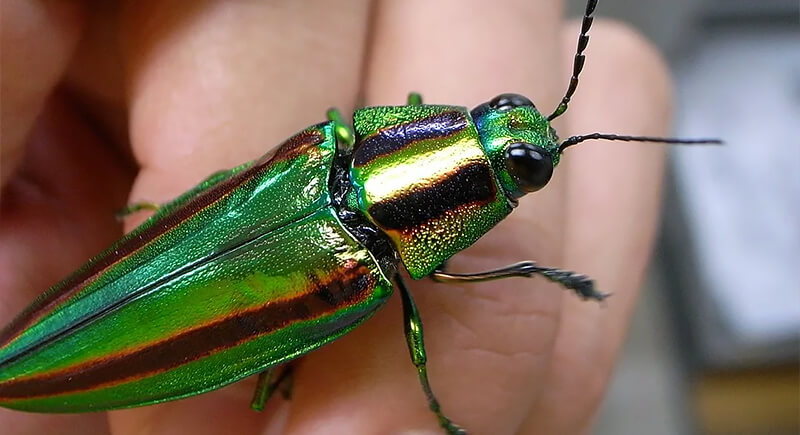
Credit: Reddit
This species lives in Southeast Asia, including Indonesia and the Philippines. Its surface reflects a mix of metallic green, blue, pink, and gold, depending on the light. Like many jewel beetles, its larvae bore into wood, which makes it beautiful and destructive. Collectors prize this beetle for its intense, natural iridescence.
Pink Orchid Mantis
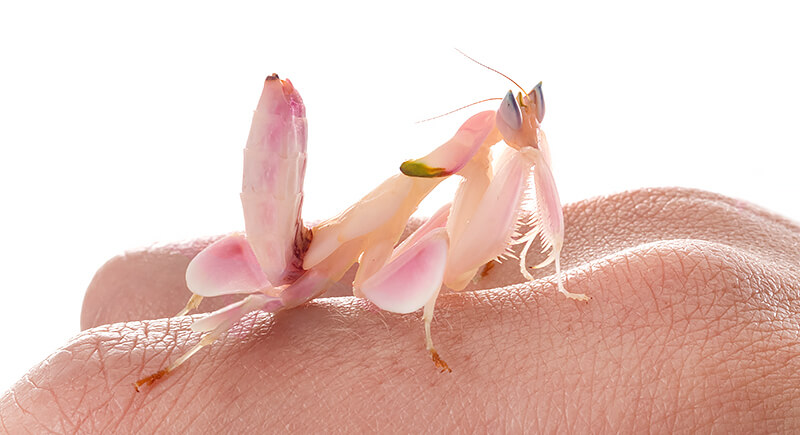
Credit: iStockphoto
This mantis blends in so well with orchids that insects land on it, thinking it’s a flower. The pink orchid mantis is found in Southeast Asia and is usually some shade of soft pink or white with petal-like limbs. It can even shift shades slightly depending on its surroundings.
Malabar Banded Peacock
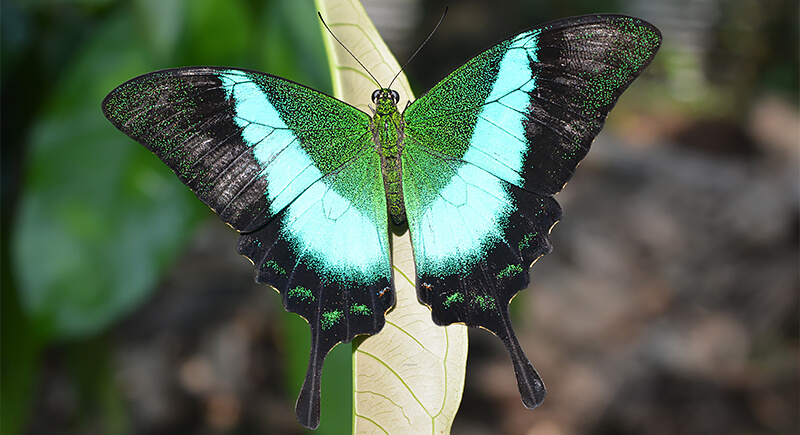
Credit: Wikipedia
The Malabar banded peacock holds the title of state butterfly in Kerala. Its wings are deep black with an electric green band across the middle and subtle blue hues closer to the body. Their patterns are understated until they catch the light, then suddenly flash like stained glass in the sun.
Thorn Treehopper
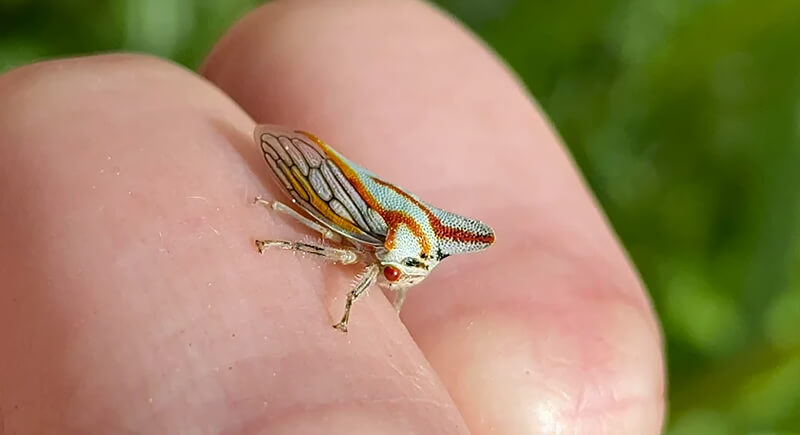
Credit: Reddit
Thorn treehoppers are small insects that mimic the shape of a thorn to avoid predators. They are usually green, sometimes with brown markings, and live in Florida and parts of Central America. They feed on tree sap and often gather in tight groups that resemble the spines of a plant.
Seafoam Striped Weevil
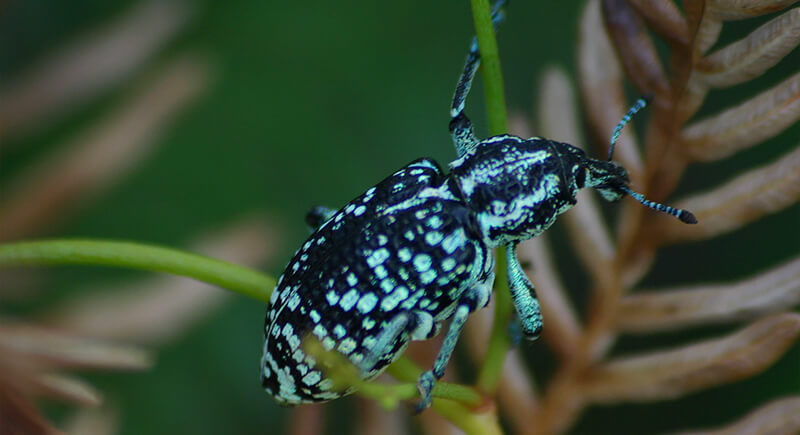
Credit: Wikipedia
Its vivid turquoise body features black stripes and small dotted textures, giving it an almost 3D effect. Scientists think its bold colors signal to predators that it tastes terrible. Unlike pantry weevils, this one’s more likely to be admired than swatted.
Neon Cuckoo Bee
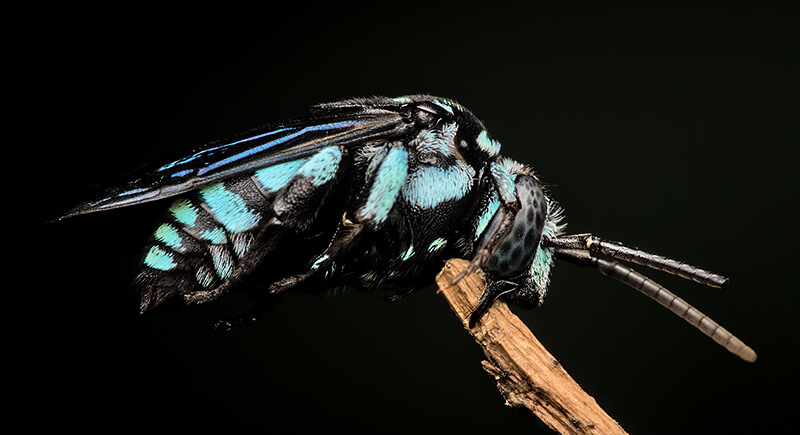
Credit: iStockphoto
Yes, blue bees exist, and this one doesn’t build its own nest. It sports metallic blue bands on a black body and lays its eggs in the nests of other bee species. Its shimmering armor helps it stand out, and maybe even scare off competitors.
Crimson Marsh Glider
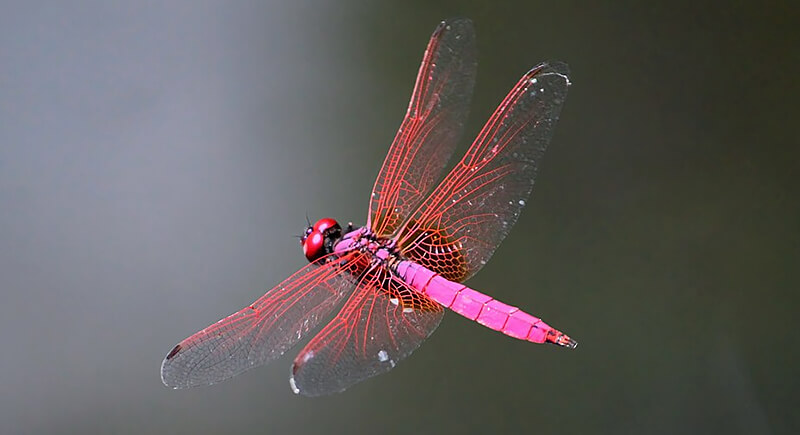
Credit: Wikimedia Commons
This dragonfly doesn’t mess around with subtlety. The male crimson marsh glider has a bold red body and matching crimson veins across its translucent wings. Females tend to be duller, but the males light up wetlands throughout Southeast Asia and India. Like other dragonflies, they’re efficient hunters.